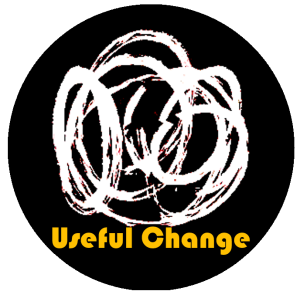Agile in Education
November 13, 2018
I look back to my almost 20 years of working since I graduated university, I think about some of the great things that lead me to where I am now. Two things stand out: the first, graduating from the University of Calgary with a Bachelor of Education. The second; walking into my very first Agile training session that was provided to me by my close friend and mentor, Jerry Doucett.
In university, we were always looking at different ways that we could engage our students. We were always looking to thought leaders within the educational realm to help us to inspire our students. From Howard Gardner to Jean Piaget to even look at Stephen Covey. We explored ideas and concepts to help with our teaching.
In 2011, I was introduced to Agile, and a whole new world opened up to me. Not only was this Agile thing a refreshing way work in teams to deliver working software, it was also a way for the people to self-organize and self-manage
Many of my peers in the software space know this image all too well:
![Screen+Shot+2018-11-12+at+8.39.03+AM[1]](https://usefulchange.com/wp-content/uploads/2020/06/ScreenShot2018-11-12at8.39.03AM1.png)
For my educational peers, this is the overview of Scrum, which was first presented by Jeff Sutherland and Ken Schwaber in 1995. By working in short iterations or Sprints, teams are able to more quickly get feedback from the customer and be able to react to any changes that come up.
It was shortly after I took Jerry’s course, I started to have thoughts on how this could be used in the school system. For me a classroom that is learning a curriculum that can self-organize and determine what and when to learn concepts would be ideal. The problem for me is that I could not narrow down a way to bring Agile methods to the education setting. I had no idea on how I could introduce Agile into the classrooms near me. So, I ended up shelving it.
Somewhere in the neighbourhood of 2016, I attended Agile Coach Camp Canada and met Mike Caspar. Over the years, we’ve had many conversations: one stands out where he was coaching Scrum at a charter school in Glendale Arizona https://learningtobeagile.org/. I was instantly fascinated by that and wanted to know more. Also, in 2017, I had the pleasures of going to the Global Scrum Gathering in San Diego. Jeff Sutherland was the keynote speaker and he talked about yet another school that is embracing Scrum to facilitate learning http://hopehighschool.org/.
This made me ask, why not have Agile in the classroom at a larger scale? Scrum in the classroom to me seems like a no brainer: Unlike what some of my peers believe, where the teachers are Product Owners and Scrum Master, I feel that the teachers should become the Product Owners; the curriculum becomes the Product Backlog; the students become the teams and rotate the Scrum Master role amongst them; the classroom becomes team spaces of upwards of 4 teams, given that Scrum teams are made up of 7 +/-2 people.
Each governmental jurisdiction provides the curriculum and establishes outcomes for each grade from Kindergarten through to Grade 12. One example is the Ontario Curriculum for Grade 6. This provides a portfolio of learnings that is expected for each Grade 6 student. We can narrow it down further by decomposing subject areas into the smallest possible learning outcome. To illustrate this, I’ve taken the Grade 6 curriculum for the year and quickly broke only one topic down to illustrate creating a User Story Map. Notice the yellow boxes, they represent the subjects required for Grade 6. Under each subject, you have the green boxes. They highlight the core topics that is needed to be covered. The white boxes would create User Stories that could be co-created by the students with guidance from the teacher.
![Screen+Shot+2018-11-12+at+11.27.28+AM[1]](https://usefulchange.com/wp-content/uploads/2020/06/ScreenShot2018-11-12at11.27.28AM1.png)
Story maps can be created for monthly “releases” or even semesters. Once created, the teacher can prioritize the stories and each team can work in 1-week Sprints after which they demonstrate their learnings to their Product Owner to confirm learnings. I believe they should be 1-week sprints because it gives the teacher a better opportunity to confirm learnings quickly.
If this kind of method of learning was to become more prevalent, I believe that our school system will be making a giant leap forward into the 21st century. The students will start to take accountability of their learning while fostering working in teams, building servant leadership, and have fun in school. The work can become more real-life relevant, and would put them in good standings for their careers.
I would love to hear your thoughts on bringing Agile to the schools.
After drafting this, I shared it with some of my peers and got some really great feedback. Here are some additional links that people (especially Mike Caspar) have provided:
John Miller – https://www.agileclassrooms.com/
Michael Vizdos – https://www.michaelvizdos.com/
eduScrum – http://eduscrum.nl/en/
Some posts from Mike Caspar about changes at Blueprint (Hope High School) for those that would like some inspirational, real-life stories 🙂https://www.linkedin.com/pulse/ceo-happy-surprised-teams-have-self-organized-school-district-caspar/https://mike-caspar.blogspot.com/2015/11/agile-and-scrum-from-perspective-of.html

